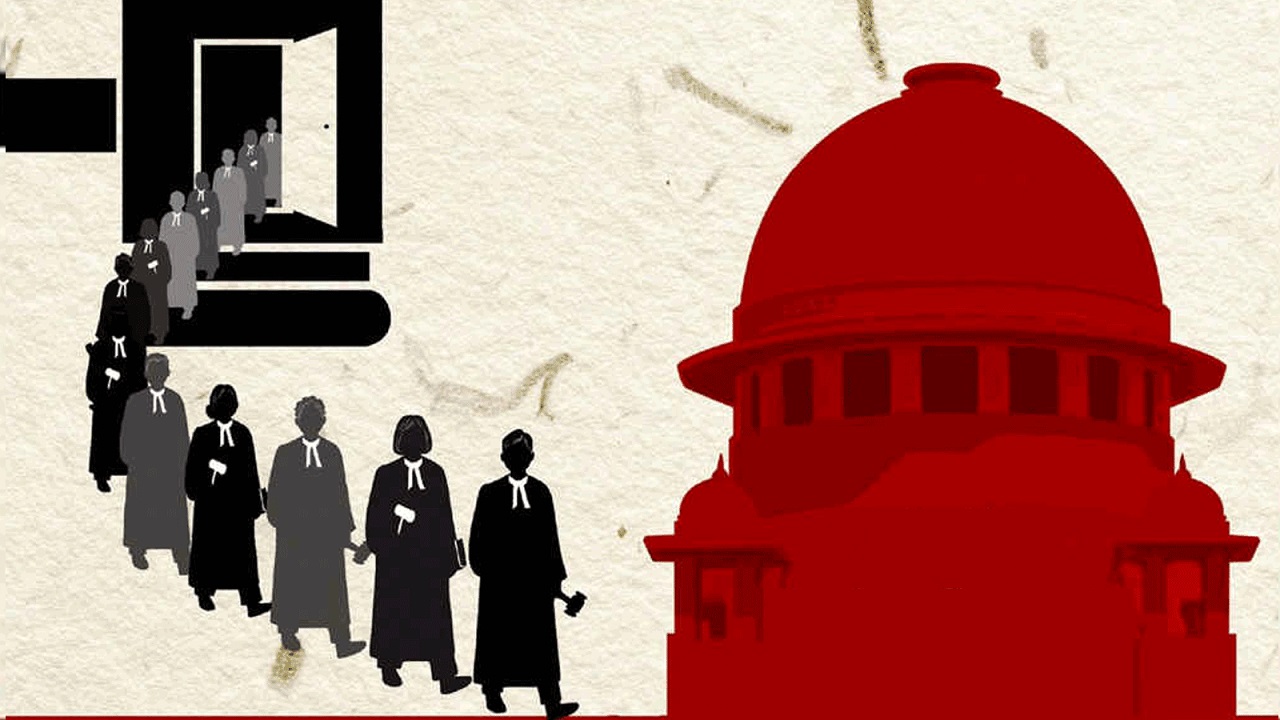Ad-Hoc Appointments of High Court Judges
Context
India’s judiciary is grappling with a massive backlog of cases, particularly in High Courts. As of January 25, 2024, data from the National Judicial Data Grid indicates that:
- 62 lakh cases are pending in High Courts.
- 18.2 lakh cases are criminal cases.
- 44 lakh cases are civil cases.
One major reason for this backlog is judicial vacancies. High Courts often struggle with a shortage of judges, leading to delays in hearings and case resolutions. To address this issue, the Supreme Court has now allowed the appointment of retired judges on an ad-hoc basis, ensuring that criminal cases are heard and cleared more efficiently.
This decision marks a significant shift in judicial administration, as it relaxes restrictions previously imposed on ad-hoc appointments.
The Supreme Court’s Latest Decision
On January 30, 2024, a Supreme Court Bench comprising Chief Justice of India (CJI) Sanjiv Khanna and Justices B.R. Gavai and Surya Kant issued a ruling permitting High Courts to appoint retired judges on an ad-hoc basis.
- These judges must only hear criminal appeals and work as part of a Bench led by a sitting judge.
- The ruling relaxes a condition set in the 2021 Lok Prahari case, which had earlier limited ad-hoc appointments to High Courts where judicial vacancies exceeded 20% of the sanctioned strength.
This change is expected to accelerate the resolution of long-pending criminal cases.
How Are Ad-Hoc Judges Appointed?
Ad-hoc judicial appointments are governed by Article 224-A of the Indian Constitution, introduced through the Fifteenth Amendment Act, 1963.
- Who can be appointed? – Retired High Court judges.
- Who approves the appointment? – The President of India, after obtaining consent from the retired judge.
- What powers do they have? – Ad-hoc judges exercise the same jurisdiction, powers, and privileges as sitting High Court judges.
- What allowances do they receive? – As determined by a Presidential order.
The 1998 Memorandum of Procedure (MoP) provides detailed guidelines on the process of such appointments.
When Are Ad-Hoc Judges Appointed?
In the Lok Prahari case (2021), the Supreme Court outlined specific conditions, or "trigger points," for appointing ad-hoc judges. These include:
- High Judicial Vacancies – If vacancies in a High Court exceed 20% of its sanctioned strength.
- Long-Pending Cases – If certain categories of cases have been pending for more than five years.
- High Court Case Backlog – If more than 10% of cases in a High Court have been pending for over five years.
- Case Clearance Rate – If a High Court is disposing of fewer cases than it is receiving (low clearance rate).
To ensure availability, the Supreme Court recommended that each Chief Justice of a High Court maintain a panel of retired and soon-to-retire judges for ad-hoc appointments.
Key Highlights of the Latest Supreme Court Order
- Relaxation of Conditions – The Supreme Court removed the requirement that ad-hoc appointments could only be made if vacancies exceeded 20% of sanctioned strength.
- Focus on Criminal Cases – Ad-hoc judges can only hear criminal appeals to reduce pendency.
- Limited Number of Appointments – The number of ad-hoc judges cannot exceed 10% of a High Court’s sanctioned judicial strength.
- This means each High Court can appoint only 2 to 5 such judges, depending on its total number of judges.
Previous Instances of Ad-Hoc Appointments
Despite being constitutionally permitted, ad-hoc judicial appointments have been rare in India. Only three documented cases exist:
- Justice Suraj Bhan (1972) – Appointed to the Madhya Pradesh High Court to handle election-related petitions.
- Justice P. Venugopal (1982) – Served as an ad-hoc judge in the Madras High Court.
- Justice O.P. Srivastava (2007) – Appointed to the Allahabad High Court to preside over the sensitive Ayodhya title dispute cases.
This rarity highlights the hesitation in using ad-hoc judges despite the increasing backlog of cases.
Conclusion
The Supreme Court’s decision to expand the scope of ad-hoc appointments is a significant move to tackle judicial delays. By allowing retired judges to assist in clearing criminal appeals, the judiciary aims to reduce case pendency without compromising on judicial quality.
However, this should not replace the need for regular judicial appointments. The government and judiciary must work together to fill permanent vacancies and strengthen the justice delivery system in a sustainable manner.


_(26).jpg)

Comments (0)